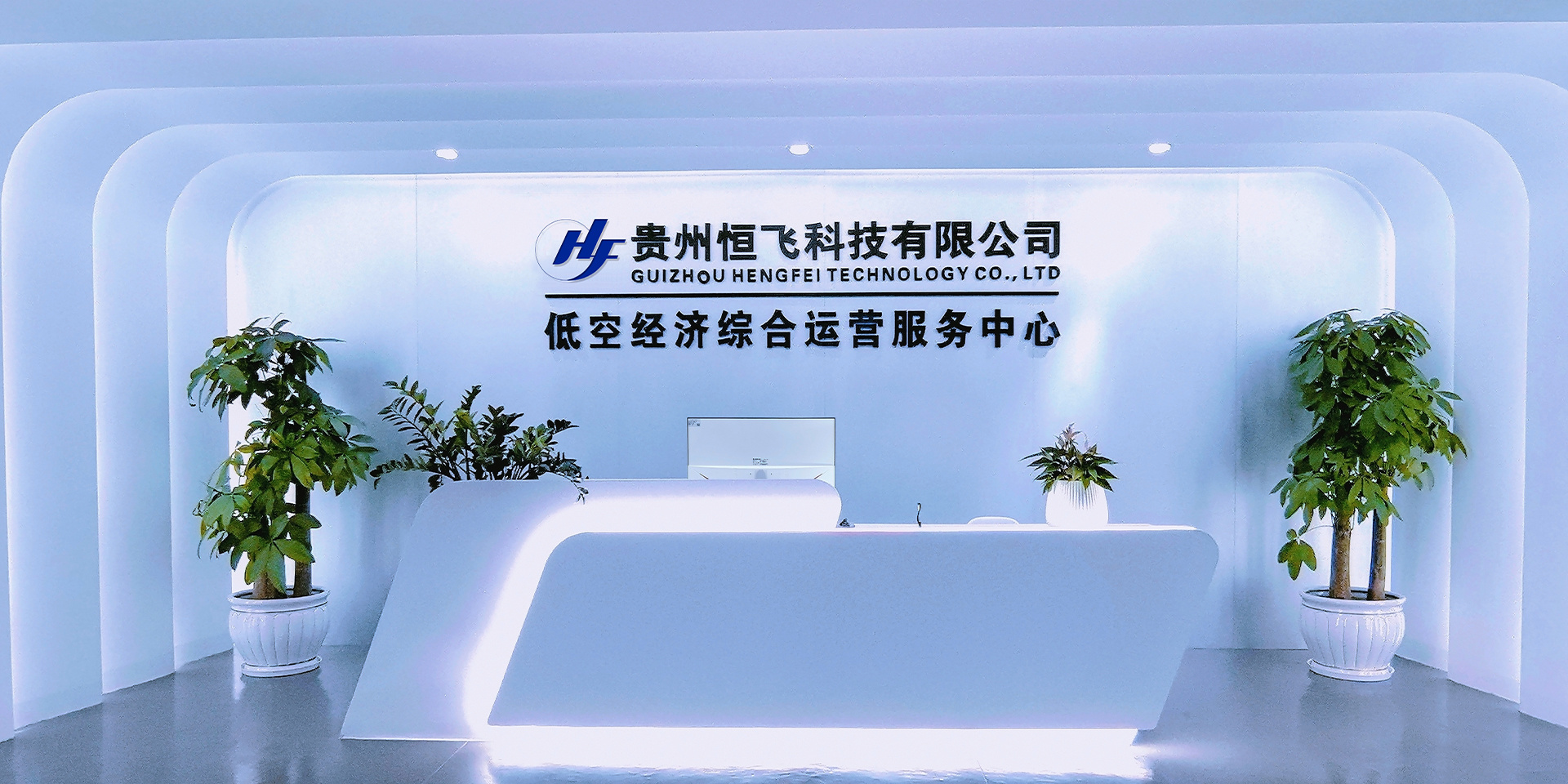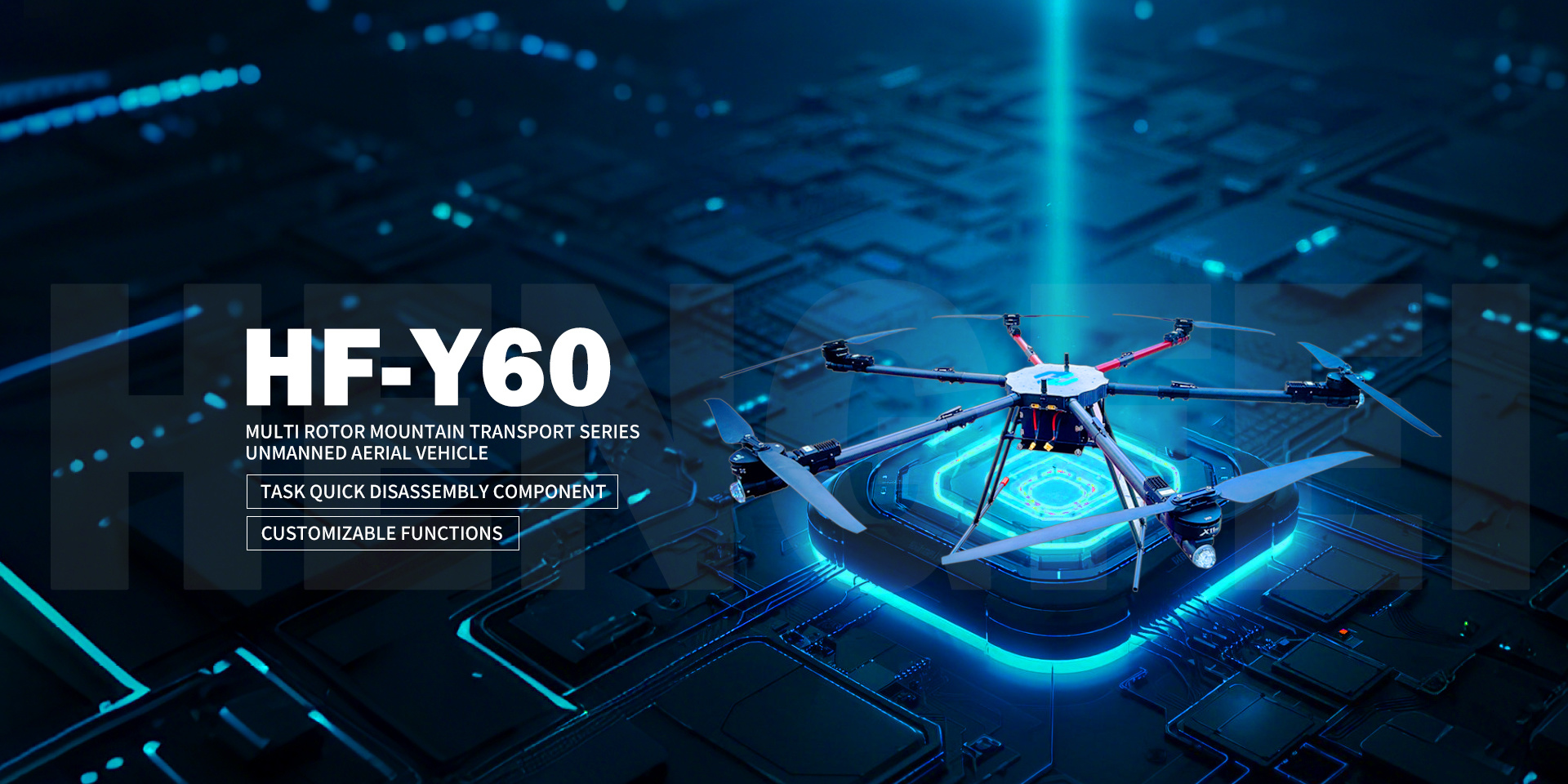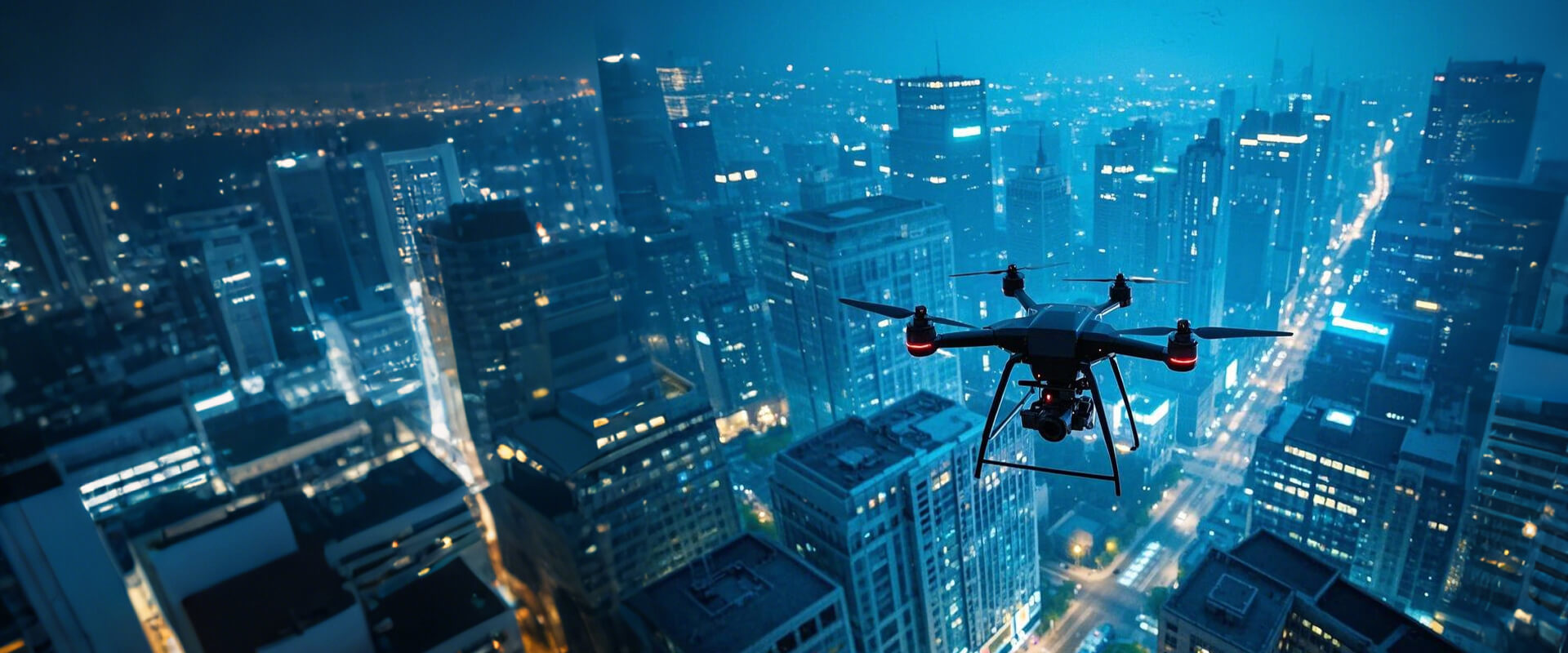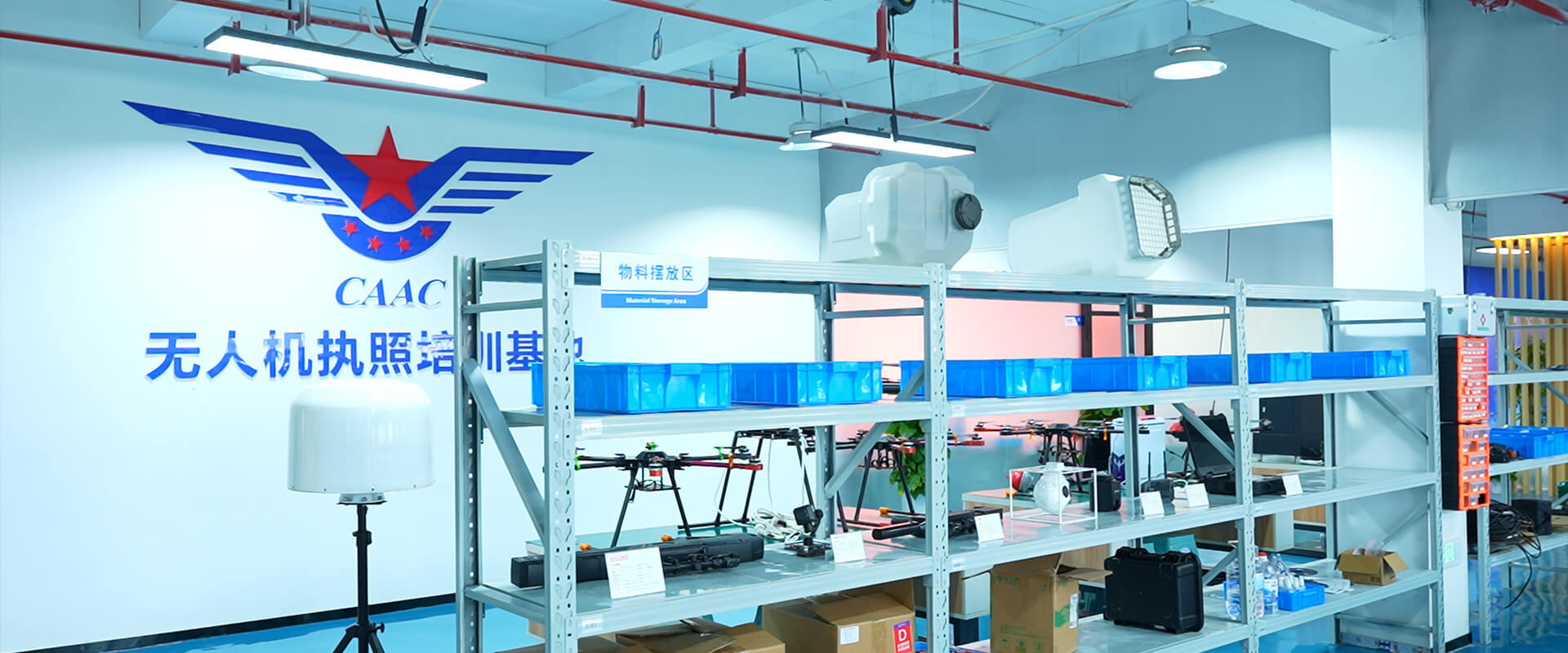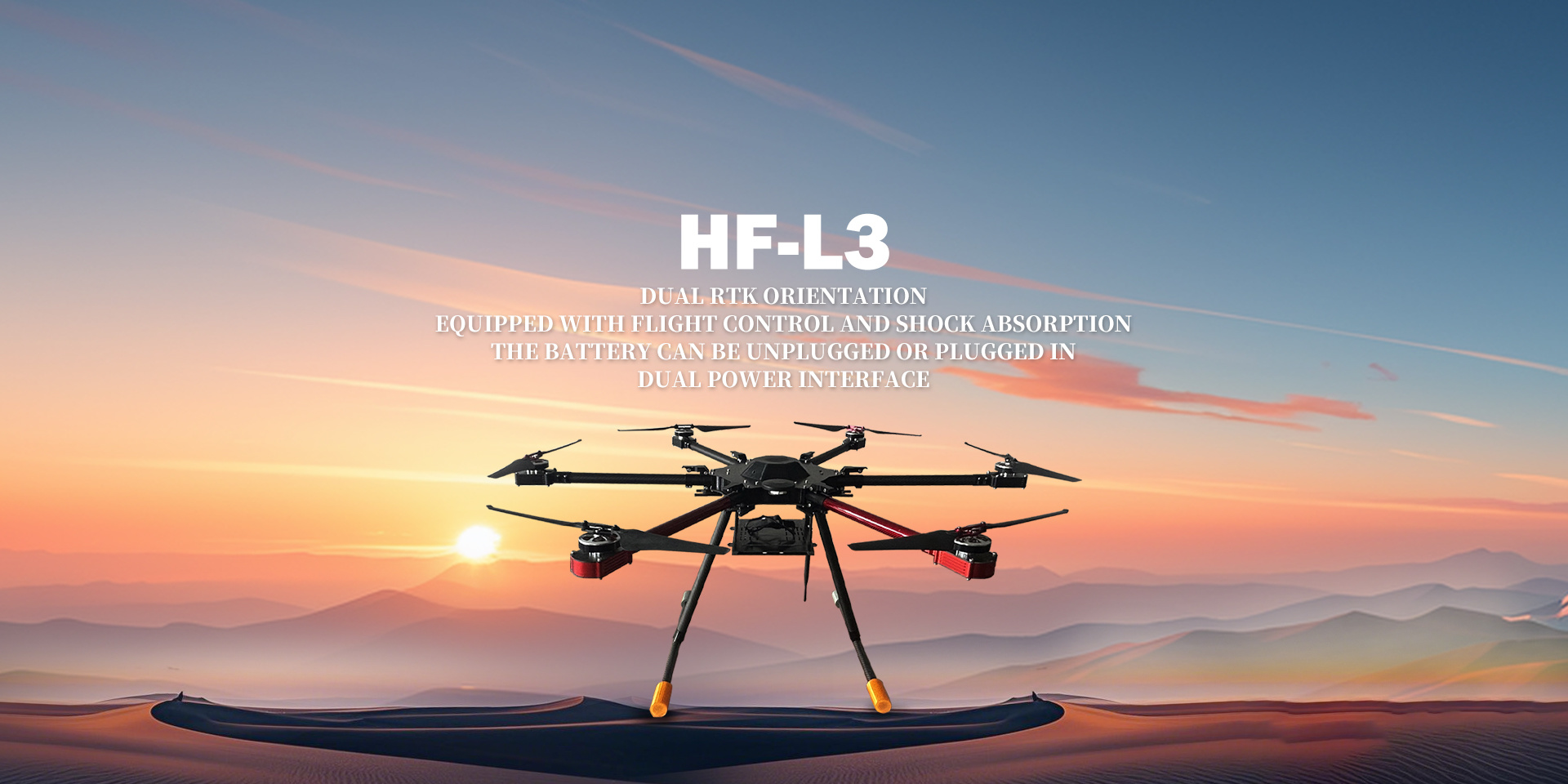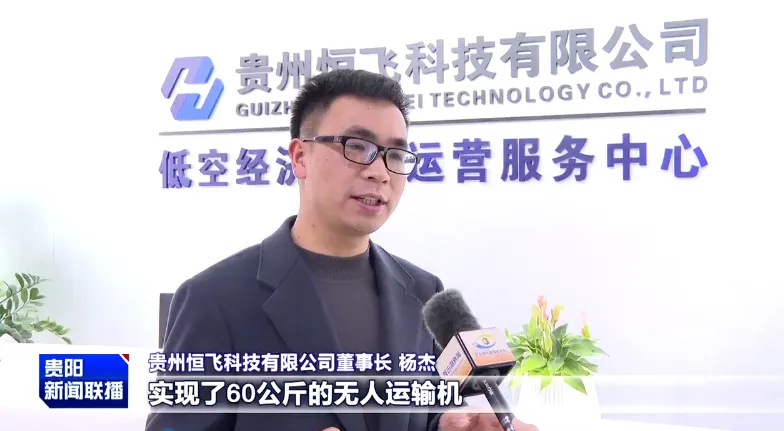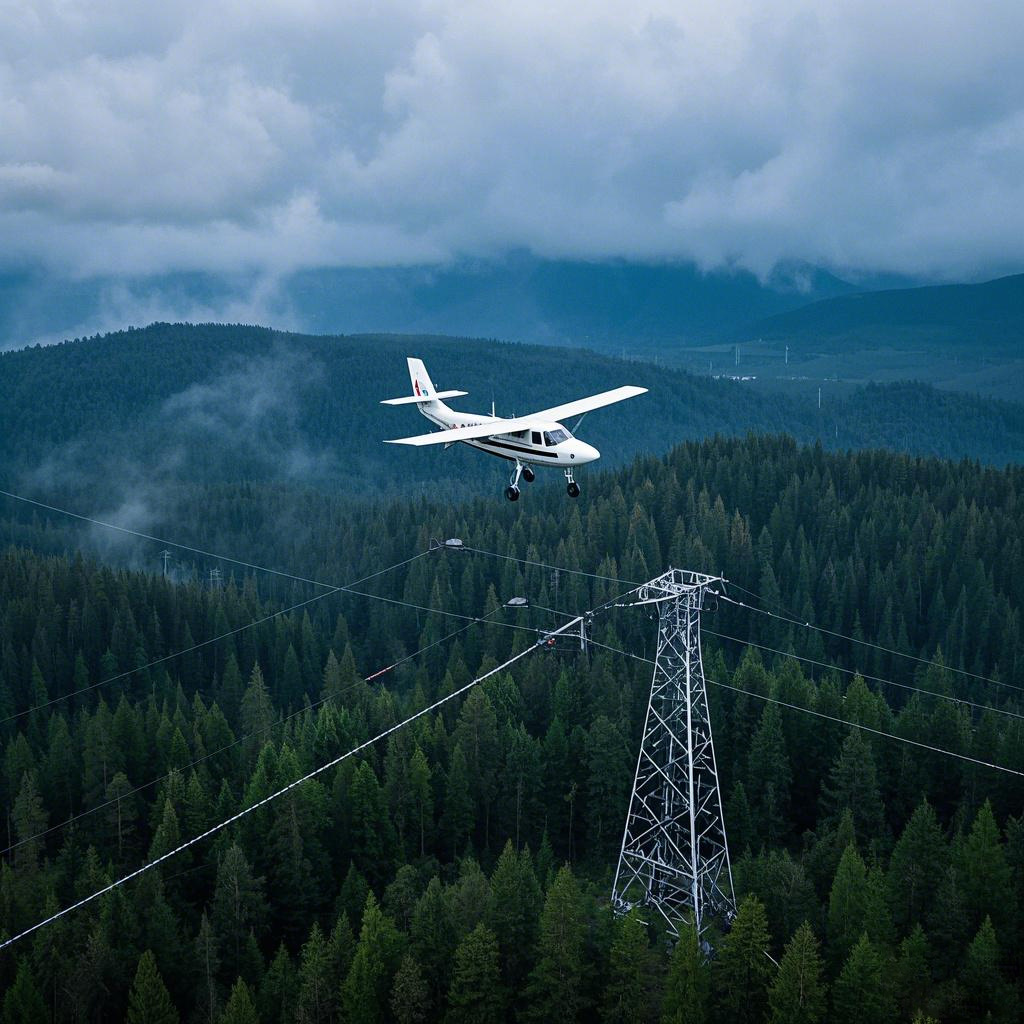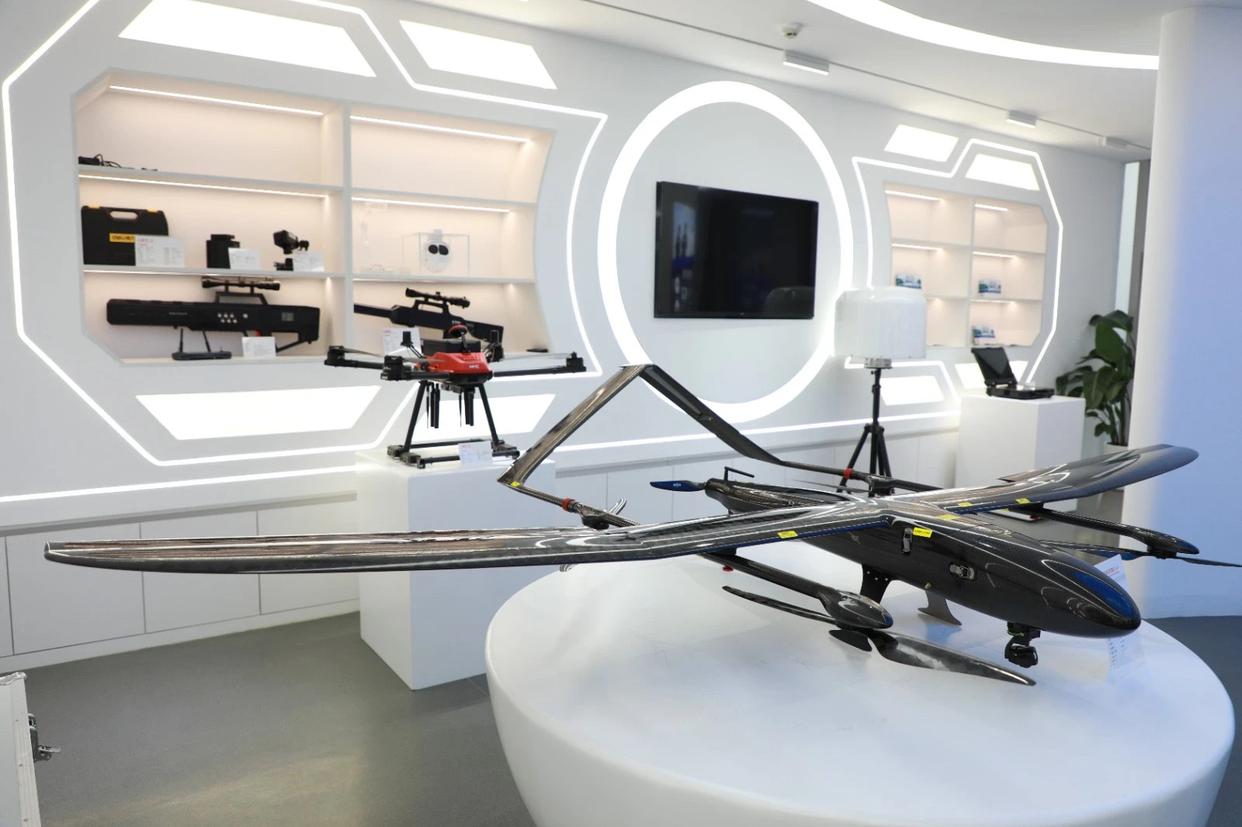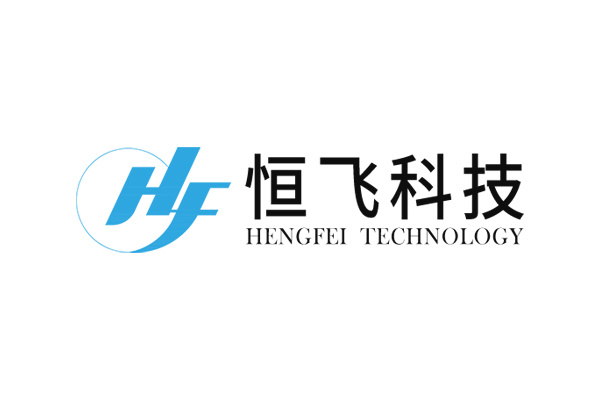News Center
2025-02-01
Low-altitude economy is a strategic emerging industry of the nation and a typical representative of new productivity. Today's "Strong Provincial Capital, New Journey" takes us to Guizhou HENGFEI TECHNOLOGY Co., Ltd., located in the intelligent manufacturing industrial park of Guanshanhu District. As a leader in the low-altitude economy field of Guanshanhu District, Guizhou Hengfei actively seizes opportunities, competes in the "new track" of the low-altitude economy, and promotes high-quality regional economic development.
2025-02-17
Beginner's Guide to Drone Flying: Easily Master Flying Skills
Drone Flight Beginner's Guide: Easily Master Flight Skills Want to become a drone flight expert? Mastering basic operating skills is key! Today, we'll share some basic drone flight operating skills to help you fly more confidently and safely in the sky. 🚀 Remote Control Familiarity: First, take the time to familiarize yourself with your drone's remote control. Most remote controls have two joysticks: the left controls altitude and rotation, and the right controls forward, backward, left, and right movement. Understanding the function of each button and switch allows you to react more quickly during flight. 🛫 Takeoff Techniques: Before takeoff, ensure the drone's battery is fully charged and the surrounding environment is open and free of obstacles. Gently push the throttle up, maintain stability, and avoid sudden pushes that could cause the drone to lose control. 🛬 Landing Techniques: When landing, gradually reduce the throttle to ensure the drone descends smoothly. Choose to land on grass or soft ground to reduce impact on the bottom of the drone. 📏 Flight Altitude: Maintaining an appropriate flight altitude is key to flight safety. Generally, the in-sight flight altitude should be controlled within 120 meters to avoid conflicts with other aircraft. Using the altitude hold function (if available) can help you maintain a stable altitude more easily. 🌐 Flight Modes: Drones typically have multiple flight modes, such as GPS mode and attitude mode. GPS mode is suitable for beginners because it automatically maintains stability; while attitude mode requires higher control skills and is suitable for experienced pilots. Choose the appropriate mode according to your skill level. 🔄 Basic Movement Practice: During flight, it is very important to master some basic movements. You can try the following exercises: Forward and backward flight: Practice the drone's forward and backward movement to feel the sensitivity of the control. Left and right turns: Control the drone's turns with the left and right joysticks, keeping the flight stable. 360-degree rotation: In a safe, open area, try to have the drone perform a 360-degree rotation to improve controllability.
2025-02-17
Drone piloting skills mainly include the following aspects
Basic Operations and Flight Modes Takeoff: In a flat, open area, unlock and slowly push the throttle to feel the lift. Flight: The left hand controls altitude and turning, the right hand manages forward, backward, left, and right movement. Practice hand-eye coordination. Landing: Predict in advance, slow down and land slowly to avoid crashing. Flight Modes: GPS Mode: Automatic hovering, one-button return to home, suitable for beginners' aerial photography. Attitude Mode: No GPS assistance, relies on manual control, suitable for advanced practice. Sport Mode: Fast speed, suitable for advanced challenges. Safe Flight Precautions No-Fly Zones: Absolutely do not enter no-fly zones such as airports and military areas. Weather Conditions: Strong winds, rain, snow, and fog can easily lead to loss of control. Check the weather before takeoff. Battery Management: Do not overcharge or discharge. Pay attention to the battery level throughout the flight and land promptly when the battery is low. Obstacle Avoidance: The drone's visual sensors cannot recognize surfaces without texture features. Make reasonable judgments about the surrounding environment during flight. Advanced Operation Techniques Hovering Practice: Hover at a height of 1 meter and repeatedly adjust until you can hover stably in the air. Flying Practice: In an open, low-wind area, control the drone's yaw left and right to judge the yaw direction. Reaction Speed Practice: Have the drone perform a 180-degree turn to adapt to the drone's orientation changes. Four-Point Hovering and Self-Rotation: Perform four-point hovering and self-rotation at a height of 2 meters to improve control skills. Ten-meter Altitude Horizontal Straight Flight: After stable hovering at point A, fly in a straight line and at a constant speed towards point B. Common Problems and Solutions Power Management: When the remaining power is 10%, it will force a landing. You can push the throttle lever upwards to slow down the landing speed. Signal Obstruction: Avoid flying behind tall buildings during flight to prevent signal obstruction and loss of contact. Interference Sources: Pay attention to interference sources such as kite strings and power poles to avoid affecting the flight.
2025-01-26
Guizhou Hengfei: Empowering with Intelligence, Leading the Low-Altitude Economy
Transportation, logistics, agricultural plant protection, tourism, urban management... As a typical representative of new productivity, the low-altitude economy is leveraging its unique advantages to continuously enrich and expand application scenarios. A variety of personalized and innovatively designed aircraft are constantly emerging, meeting the needs of different scenarios.
2025-03-13
Detailed explanation of drone maintenance, parts repair and replacement techniques
Drones, as sophisticated aviation equipment, require meticulous maintenance and part repair/replacement to ensure flight safety and extend their lifespan. The following is a detailed analysis of drone maintenance, repair, and part replacement techniques: I. Drone Maintenance Techniques 1. Understanding Basic Structure: Familiarize yourself with the drone's basic structure, including the airframe, power system (motors, propellers), battery system, flight control system (including GPS module, gyroscope, accelerometer, and other sensors), remote control, and data transmission system. Understanding the function and interrelationship of each component helps pinpoint problems accurately. 2. External Cleaning: Use a soft, dry cloth or a special cleaning cloth to wipe the airframe. Avoid using chemical cleaning agents or directly washing with water. Camera lenses should be cleaned regularly. Use professional lens paper or an air blower to remove dust and fingerprints. 3. Dust Prevention: When storing, cover the drone with a dust cover, especially after flying in dusty environments. 4. Motor and Propeller Maintenance: Regularly check the propellers for damage, deformation, or looseness. Replace them if necessary. Use a fine brush to clean dust and debris from the outside of the motor to prevent overheating. Use a propeller balancer to check if the propellers are balanced to ensure stable flight. 5. Battery Maintenance and Storage: Use the original or certified charger to avoid overcharging or over-discharging. Store in a dry, cool place, avoiding high temperatures and humid environments. Regularly check the battery for damage, bulging, etc., to ensure battery health. 6. Sensor Calibration and Inspection: Compass Calibration: Perform calibration away from magnetic field interference to ensure accurate flight direction. Accelerometer and Gyroscope Calibration: Calibrate through the flight control system software to improve flight stability. GPS Calibration: Perform calibration in an open area to ensure positioning accuracy. 7. Flight Control System Diagnosis: View logs through the flight control system software and analyze abnormal information. Perform simulated flights in a safe environment to observe whether the drone's response is normal. 8. Fastener and Connection Inspection: Check that all screws are tightened to avoid mechanical failures due to loosening. Confirm that all cables and plugs are securely connected and there are no breaks or poor contact. 9. Mechanical Component Inspection: Check that landing gear, gimbals, and other mechanical components are intact and free from wear or damage. II. Drone Part Repair and Replacement Techniques 1. Propeller Replacement: If a propeller has cracks, chips, or damage, replace it with a new propeller immediately. 2. Motor Repair or Replacement: If a motor malfunctions, check the inside of the motor for damaged components such as bearings or coils. If the motor cannot be repaired, replace it with a new motor. 3. Sensor Repair or Replacement: If a sensor malfunctions, try to repair it by calibration or parameter adjustment. If it cannot be repaired, replace it with a new sensor. 4. Battery Replacement: When the battery life reaches a certain level or is severely damaged, replace it with a new battery. 5. Repair or Replacement of Other Mechanical Components: If mechanical components such as landing gear or gimbals are damaged, they need to be repaired or replaced. III. Safe Operating Procedures 1. Pre-flight Inspection: Perform a comprehensive inspection before each flight to ensure the drone is in good condition. 2. Compliance with Regulations: Strictly abide by national and regional laws and regulations on drone flights. 3. Maintain Visual Line of Sight: Flights beyond visual line of sight require obtaining the corresponding permits and taking necessary safety measures. 4. Avoid Interference: Stay away from high-voltage lines, radio interference sources, and other areas that may affect flight safety. 5. Emergency Preparedness: Carry necessary emergency equipment and develop contingency plans to ensure that you can quickly respond to emergencies. In summary, drone maintenance and part repair and replacement are systematic and meticulous tasks. By regularly performing maintenance and promptly repairing or replacing damaged parts, the lifespan of the drone can be significantly extended, improving flight safety and efficiency.
2025-03-13
Drone maintenance and upkeep primarily includes the following aspects:
Aircraft Maintenance: Cleaning the Aircraft Body: Regularly clean the drone to remove dust, dirt, and other debris, especially from key areas such as sensors and lenses, to ensure accuracy and stability during flight. Checking the Aircraft Body Structure: Check the aircraft body for cracks, deformation, or looseness, and repair or replace damaged parts in a timely manner. Water and Moisture Proofing: Ensure that the drone is stored in a dry environment to prevent moisture and water ingress. Dry it thoroughly after each flight to prevent damage to internal circuits. Battery Maintenance: Correct Charging: Use the original or certified charger to charge the battery, avoiding overcharging or over-discharging to extend battery life. Storage Conditions: The battery should be stored in a temperature range of 0-40℃, avoiding high and low temperature environments. When not in use for a long time, it is recommended to keep the battery charge between 50%-80%, and regularly perform charge and discharge cycles. Checking Battery Status: Regularly check the battery's voltage, capacity, and internal resistance, and replace it immediately if any problems are found. Propeller Maintenance: Checking the Propeller: Check the propeller for cracks, deformation, or damage before and after each flight, and replace it in a timely manner. Balance Test: Regularly perform a balance test on the propeller to ensure that it rotates stably during flight. Sensor and Lens Maintenance: Cleaning Sensors and Lenses: Regularly clean dust, oil stains, etc., from the sensors and lenses to ensure the accuracy of shooting and navigation. Checking Status: Check the sensors and lenses for scratches, stains, or damage, and repair or replace them in a timely manner. Other Precautions: Updating Firmware and Software: Regularly check and update the drone's firmware and software to ensure that it has the latest features and performance optimizations. Flight Log Recording: Record the log of each flight, including flight time, location, weather conditions, etc., for subsequent analysis and improvement. Following Manufacturer's Guidelines: Follow the drone manufacturer's maintenance guidelines and recommendations to ensure the correct use and maintenance of the drone. Common Problems and Solutions: Battery Swelling or Leakage: If the battery shows signs of severe swelling or leakage, stop using it immediately and replace it with a new battery. Motor Overheating: Regularly clean dust and debris from the outside of the motor to maintain good heat dissipation. Check the motor bearing lubrication and add lubricating oil as needed. Propeller Imbalance: Use a propeller balancer to check the balance of the propeller to ensure its stability during flight. Through regular inspection and maintenance, the stable performance and safe flight of the drone can be ensured, and its service life can be extended.
2025-03-13
Drone Maintenance Guide: How to Make Your Drone More Durable?
Drones, these precision instruments, are playing an increasingly important role in aerial photography, surveying, leisure activities, and even professional fields. However, whether you are a novice just getting started with drones or an experienced veteran, you must recognize the importance of maintenance. Because drones are often used in complex environments, such as dust, humidity, and temperature changes, all of which can have a negative impact on them. Improper maintenance will not only shorten their service life but may also lead to serious safety problems. Therefore, this article will delve into the key points and operational techniques of daily drone maintenance, aiming to help readers extend the service life of their drones and ensure the safety of each flight. 1. The Importance of Drone Maintenance Before discussing the specific methods of daily drone maintenance, we first emphasize the importance of maintenance. Good maintenance not only helps extend the overall life of the equipment but also ensures the safety of each flight. Through regular inspections and maintenance, we can promptly identify and resolve potential problems, avoiding unexpected crashes mid-flight due to malfunctions. At the same time, regular cleaning and debugging can keep the drone in optimal flight condition, thus ensuring the optimization of shooting effects and performance. In addition, timely daily maintenance can also help us save unnecessary repair costs and avoid high repair costs due to neglecting small problems. Next, we will delve into the specific methods and principles of drone maintenance from several aspects. 2. Pre-Flight Comprehensive Inspection Before each flight, a thorough inspection of the drone must be carried out to ensure that it is in good condition and can fly safely. Specifically, the following aspects need to be considered: First, carefully inspect the body, paying attention to any cracks, deformations, or loose parts. For folding drones, the firmness of the arms needs to be checked especially carefully. Second, the condition of the propellers is also crucial. Ensure that the propellers are intact and undamaged, with no bends or looseness. Regularly replace worn propellers to prevent excessive vibration or loss of control during flight. In addition, the condition of the battery is another aspect that cannot be ignored. Ensure that the battery is fully charged and carefully check the battery for any swelling, damage, or abnormal heating. At the same time, sensors are an important component in the drone's flight process, and their condition also needs attention. Regularly clean the dust or foreign matter on the obstacle avoidance sensors to ensure their normal operation. Finally, firmware updates are an indispensable step. Ensure that both the drone and the remote controller have been upgraded to the latest version of the firmware to avoid flight abnormalities caused by software problems. 3. Key Points During Flight During the drone's flight, operational techniques and environmental factors will cause a certain degree of wear and tear on the equipment. To ensure safety and reduce unnecessary damage, please follow these suggestions: First, avoid flying in extreme weather conditions, such as strong winds, heavy rain, thick fog, or extreme high/low temperatures, as these conditions can significantly increase the burden on the motors and battery. Second, during the flight, you should always be aware of the surrounding environment, especially staying away from trees, power lines, tall buildings, and other potential obstacles, to ensure that the sensors can continue to operate normally. In addition, during long flights, be sure to regularly check the drone's flight status, including the flight attitude, battery power, and signal strength, to ensure a safe landing. 4. Post-Flight Maintenance After the flight, the drone may have dust, soil, and other impurities attached due to contact with the air, ground, etc. To ensure its performance and lifespan, cleaning and a detailed inspection should be carried out immediately. First, gently wipe the surface of the drone with a clean, soft cloth to remove any attached dust and stains. For parts with more sand and mud, it is recommended to use a blower to clean them, and be careful to avoid direct water washing. Second, remove dirt from the propellers to ensure balance during flight. During cleaning, care should be taken to avoid excessive force that could damage the propellers. In addition, be sure to ensure that the battery has cooled completely before charging or storing it. If the battery is accidentally wet, it should be immediately wiped dry with a dry cloth, and care should be taken to avoid placing it in a humid environment. Finally, store the drone properly in a dedicated storage box or bag to prevent squeezing and dropping. At the same time, ensure that the storage environment is dry and ventilated, and avoid high temperatures and direct sunlight to extend its service life. 5. Regular In-Depth Maintenance In addition to daily inspection and cleaning, drones also need regular in-depth maintenance to identify and resolve potential problems. This includes calibrating sensors and compasses to ensure the accuracy of flight data; checking the rotation status of the motors, paying attention to any unusual noises or changes in resistance, and cleaning internal dust; at the same time, the remote controller also needs a thorough inspection, including whether the joystick, buttons, and screen are functioning properly, and updating the firmware to ensure the stability of signal transmission. In addition, regularly replacing aging propellers, batteries, and other consumable parts is also essential to ensure flight safety. It is particularly important to emphasize that the drone battery, as a core component, is crucial for maintenance. Good battery maintenance habits can significantly extend its battery life and overall service life. 6. Battery Charging Instructions To ensure the safety and performance of the drone battery, use the original charger to charge it to avoid battery damage that may be caused by voltage mismatch. At the same time, strictly control the charging time, avoiding overcharging or over-discharging. It is recommended to disconnect the charger immediately after the battery is fully charged. In addition, during the charging process, be sure to ensure that the battery is placed in a safe environment away from flammable materials to prevent any potential safety risks. 7. Battery Storage Instructions Drone batteries should be stored in a dry and ventilated environment to prevent moisture damage. If not used for a long time, it is recommended to charge the battery to 40%-60% storage capacity to avoid storing the battery in a fully charged or completely discharged state. 8. Common Problems and Solutions Severe propeller vibration: Check if the propellers are bent, damaged, or loose, and replace them accordingly. Weak drone signal: Confirm that the remote controller antenna is correctly adjusted, and avoid flying in areas with complex signals (such as high-rise buildings, dense trees). Reduced flight time: Check if the battery is aging or has swollen, and reduce high-load flights (such as high-speed flight or flying in the wind). Sensor failure: Clean the sensor surface dust, restart the drone, and then calibrate the sensors or update the firmware. By following the above suggestions, you will be able to better maintain your drone, ensuring that it is always in optimal condition and adding more excitement to your flight experience.
2025-03-13
Detailed explanation of drone maintenance, parts repair and replacement techniques
Drones, as sophisticated aviation equipment, require maintenance, repairs, and part replacements to ensure flight safety and extend their lifespan. Below is a detailed analysis of drone maintenance, repair, and part replacement techniques: I. Drone Maintenance Techniques 1. Understanding Basic Structure: Familiarize yourself with the drone's basic structure, including the airframe, power system (motors, propellers), battery system, flight control system (including GPS module, gyroscope, accelerometer, and other sensors), remote control, and data transmission system. Understanding the function and interrelationship of each component helps pinpoint problems. 2. External Cleaning: Use a soft dry cloth or specialized cleaning cloth to wipe the airframe. Avoid using chemical cleaners or direct water washing. Camera lenses should be cleaned regularly using specialized lens paper or an air blower to remove dust and fingerprints. 3. Dust Prevention: When storing, cover the drone with a dust cover, especially after flying in dusty environments. 4. Motor and Propeller Maintenance: Regularly check the propellers for damage, deformation, or looseness, and replace them if necessary. Use a fine-bristled brush to clean dust and debris from the outside of the motor to prevent overheating. Use a propeller balancer to check if the propellers are balanced to ensure stable flight. 5. Battery Maintenance and Storage: Use the original or certified charger to avoid overcharging or over-discharging. Store in a dry, cool place, avoiding high temperatures and humid environments. Regularly check the battery for damage, bulging, etc., to ensure battery health. 6. Sensor Calibration and Inspection: Compass Calibration: Perform calibration away from magnetic field interference to ensure accurate flight direction. Accelerometer and Gyroscope Calibration: Calibrate using the flight control system software to improve flight stability. GPS Calibration: Perform calibration in an open area to ensure positioning accuracy. 7. Flight Control System Diagnostics: Use the flight control system software to view logs and analyze anomalies. Perform simulated flights in a safe environment to observe whether the drone is responding normally. 8. Fasteners and Connection Inspection: Check that all screws are tightened to prevent mechanical failure due to looseness. Confirm that all cables and plugs are firmly connected and show no breakage or poor contact. 9. Mechanical Part Inspection: Check that landing gear, gimbals, and other mechanical parts are intact and show no wear or damage. II. Drone Part Repair and Replacement Techniques 1. Propeller Replacement: If the propeller is cracked, chipped, or damaged, replace it with a new one. 2. Motor Repair or Replacement: If the motor malfunctions, check for internal damage such as bearings or coils. If the motor cannot be repaired, replace it with a new motor. 3. Sensor Repair or Replacement: If a sensor malfunctions, try to repair it by calibration or parameter adjustment. If it cannot be repaired, replace it with a new sensor. 4. Battery Replacement: Replace the battery with a new one when its lifespan is reached or it is seriously damaged. 5. Repair or Replacement of Other Mechanical Parts: Repair or replace damaged mechanical parts such as landing gear and gimbals. III. Safe Operating Procedures 1. Pre-flight Inspection: Conduct a thorough inspection before each flight to ensure the drone is in good condition. 2. Compliance with Regulations: Strictly comply with national and regional laws and regulations regarding drone flights. 3. Maintain Visual Line of Sight: Beyond visual line-of-sight (BVLOS) flights require appropriate permits and safety measures. 4. Avoid Interference: Stay away from high-voltage lines, radio interference sources, and other areas that may affect flight safety. 5. Emergency Preparedness: Carry necessary emergency equipment, develop contingency plans, and ensure that you can quickly respond to emergencies. In summary, drone maintenance and part repair and replacement are systematic and meticulous tasks. Regular maintenance and timely repair and replacement of damaged parts can significantly extend the lifespan of the drone, improve flight safety, and increase efficiency.
2025-03-13
Comprehensive Guide to Drone Maintenance, Servicing, and Parts Repair and Replacement
Drones, these sophisticated aviation devices, require meticulous maintenance and part repair and replacement. These tasks are crucial for flight safety and equipment durability. The following section delves into the technical details of drone maintenance and part repair and replacement. 01 Drone Maintenance Techniques Understanding Basic Construction: Become thoroughly familiar with the drone's components, such as the airframe, power system (motors, propellers), battery system, flight control system (including GPS module, gyroscope, accelerometer, and other sensors), remote control, and data transmission system. Know the function of each component and their interdependencies to quickly locate problems when they arise. External Cleaning: Use a soft, dry cloth or a specialized cleaning cloth to wipe down the drone's body. Avoid using chemical cleaning agents or water directly to prevent damage to electronic components. Regularly clean the camera lens using professional lens paper or an air blower to remove dust and fingerprints, ensuring image quality. Dust Prevention: When not in use, cover the drone with a dust cover, especially after flying in dusty environments, to prevent dust from entering mechanical parts. Motor and Propeller Maintenance: Regularly check the propellers for damage, deformation, or looseness, and replace them as needed. Use a soft brush to clean dust and debris from the outside of the motors, ensuring good heat dissipation. Use a propeller balancer to check the balance of the propellers to ensure stability during flight. Battery Care and Storage: Use the original or certified charger to charge the battery, and avoid overcharging or over-discharging to extend battery life. Store the battery in a dry, cool place, away from high temperatures and humidity. Regularly check the battery for damage, swelling, etc., and address any issues promptly. Sensor Calibration Check: Calibrate the compass, ensuring it is done away from magnetic field interference to ensure accurate flight direction. Calibrate the accelerometer and gyroscope using the flight control system software to improve flight stability. Calibrate the GPS in an open area to ensure positioning accuracy. Flight Control System Diagnostics: Use the flight control system software to view logs and analyze any anomalies. Conduct simulated flights in a safe environment to observe the drone's response and determine if the flight control system is functioning correctly. Fasteners and Connection Checks: Carefully check that all screws are tightened to avoid mechanical failures due to loosening. Ensure that all cables and connectors are secure and free from breakage or poor contact. Mechanical Component Inspection: Thoroughly inspect mechanical components such as the landing gear and gimbal to ensure that they are undamaged and free from wear or damage. · Drone Part Repair and Replacement Techniques · Propeller Replacement: If a propeller has cracks, chips, or damage, replace it immediately to ensure safe and efficient flight. Motor Repair and Replacement: In case of motor failure, first check for damaged internal components such as bearings or coils. If it cannot be repaired, a new motor must be installed. Sensor Maintenance and Updates: For sensor malfunctions, try calibrating or adjusting parameters. If this is ineffective, consider replacing the sensor to ensure accurate and stable flight. Battery Replacement: As battery life shortens or if significant damage occurs, replace the battery promptly to ensure the drone can continue to fly steadily. Repair and Replacement of Other Mechanical Components: For damage to mechanical components such as the landing gear and gimbal, repair or replacement should be done promptly to restore the drone's overall performance and flight safety. · Safety Operating Procedures · Pre-Flight Comprehensive Inspection: Before each flight, thoroughly inspect the drone to ensure all performance aspects are in good condition. Strictly Adhere to Regulations: During flight, strictly follow national and regional laws and regulations regarding drone flight to ensure compliant operation. Maintain Visual Line of Sight: Unless otherwise permitted, operate the drone within visual line of sight and take necessary safety precautions. Stay Away from Interference Sources: Avoid flying the drone near high-voltage lines, radio interference sources, or other areas that may affect flight safety. Be Prepared for Emergencies: Carry necessary emergency equipment and have an emergency plan in place to respond quickly to unexpected situations. In summary, following these safety operating procedures is crucial for ensuring stable drone flight, extending its service life, and ensuring flight safety. Safe Flight, Starting with Me With the increasing popularity of drones, we should all be aware of the importance of safe flight. Following the safety operating procedures described above is not only responsible for oneself but also contributes to the safety of others and society. Through comprehensive inspections, adherence to regulations, maintaining visual line of sight, staying away from interference sources, and being prepared for emergencies, we can create a safe and orderly drone flying environment together.
2025-03-12
A Comprehensive Analysis of UAV Operation and Maintenance
The Unmanned Aerial Vehicle (UAV) Operation and Maintenance major covers a wide range of courses, including: 🚁 Flight Principles and Performance: Learn about UAV flight principles, performance parameters, and flight safety standards. 📜 Airspace Control and Flight Safety: Master UAV flight rules, airspace management, and flight safety knowledge. 🔧 UAV Assembly: Learn the assembly process and techniques for UAVs, and understand the function of each component. 🔋 UAV Power Technology and Configuration: Master UAV power systems, battery technology, and configuration methods. 🛠️ UAV Maintenance: Understand the daily maintenance, upkeep, and troubleshooting methods for UAVs. 🔧 Troubleshooting and Repair: Learn how to detect and repair common UAV malfunctions to ensure normal operation. 📸 Aerial Photography and Post-Production: Master UAV aerial photography techniques, as well as post-processing and editing methods. 🔬 Sensor Technology Applications: Understand the working principles and application scenarios of UAV sensors. Career Paths: Graduates of the UAV Operation and Maintenance major can work in advanced technical positions in fields such as land surveying and investigation, UAV data acquisition and processing, environmental monitoring, agricultural plant protection, aerial photography, and photogrammetry.


